The architect gave a heartfelt speech at the 2013 Pritzker Prize ceremony, held in his honour at the John F. Kennedy Library and Museum in Boston, Massachusetts.
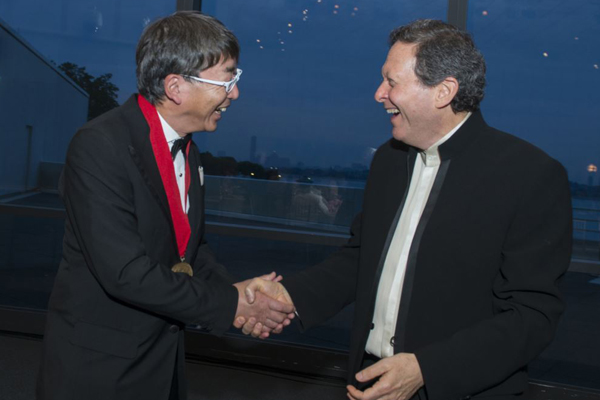
June 13th, 2013
“Good evening ladies and gentlemen! I am thrilled and honored to be awarded the Pritzker Prize in the presence of so many dear friends and distinguished architects from around the world. It is also a special pleasure to be here, in the John F. Kennedy Library, on the birthday of John F. Kennedy, the 35th President. I do believe this is the best day of my life so far!
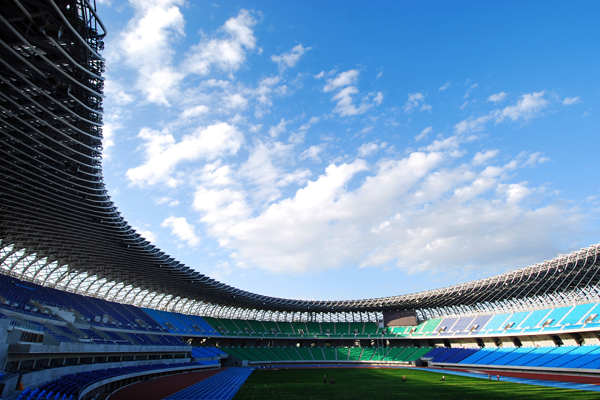
Main Stadium for The World Games (2009), Kaohsiung, Taiwan R.O.C. Photo: Fu Tsu Construction Co., Ltd
I would like to express my heartfelt gratitude first to the Pritzker Family: Mrs. Cindy Pritzker, Mr. Thomas J. Pritzker, and Mrs. Margaret Pritzker. I also thank the jury members, Lord Peter Palumbo, Mr. Alejandro Aravena, Mr. Juhani Pallasmaa, Mr. Glenn Murcutt, Mr. Stephen Breyer, Mr. Yung Ho Chang, and Ms. Martha Thorne.
At the same time, being here in Boston, I cannot help but think of the bombing that happened here last month. Please allow me to offer my condolences to the victims and to all of those whose lives were affected by those horrific events.
It has been 42 years since I first opened my studio. Making architecture is not something one does alone; one must be blessed with many good collaborators to make it happen. I would like to express my deep thanks to Mr. Mutsuro Sasaki, who is an extremely talented structural engineer, and who is here with us today. For almost twenty years now, Mr. Sasaki has provided me with a steady stream of creative structural ideas for which I am extremely grateful. I would also like to thank my staff for sticking with me and sharing so much hard work and struggle over so many years.
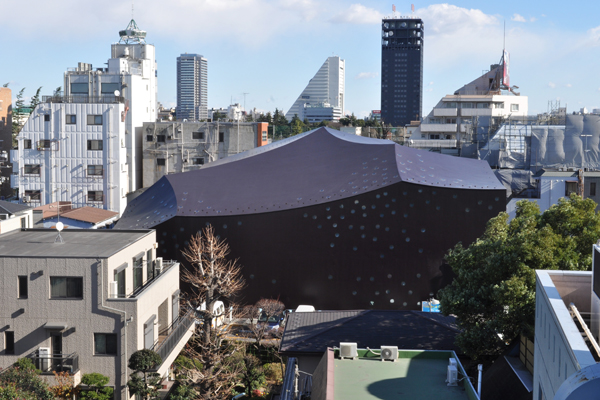
Za-Koenji Public Theatre, Tokyo, Japan (2008)
To make architecture is to attempt to establish order in the midst of an unstable and ceaselessly changing social and natural world. It often happens, however, that in this search for order we settle into old or conventional solutions and find ourselves boxed into restrictive frameworks. For me, the task of the architect is to release people from those restrictive frameworks by creating spaces in which they feel at ease and in which they can attain some degree of freedom.
This is why I was especially pleased to read the Jury Citation about my work. The jury members wrote that I am “seeking to extend the possibilities of architecture,” and that my works, “attain a level of calmness that ultimately allows the inhabitants to freely develop their activities within them.” I have always tried to push my architecture forward without allowing my style to remain static. And I have done this in the interest both of architectural “innovation” and in order to attain “a level of calmness.”
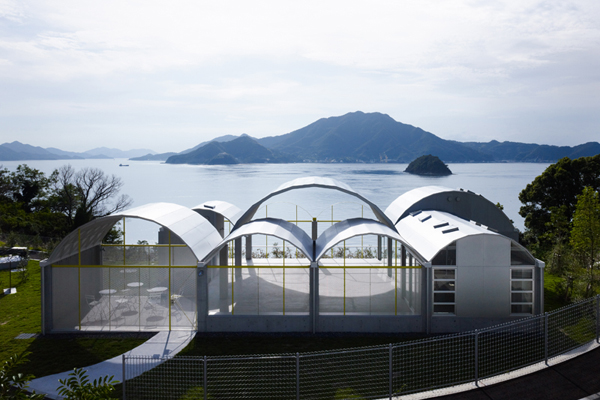
Toyo Ito Museum of Architecture, Imabari (2011)
The architecture of the cities we live in today had its beginnings in the early part of the twentieth century. In New York and Chicago, Mies Van der Rohe and others created skyscrapers like nothing that had ever existed before in human history. In Europe, Le Corbusier and his colleagues proposed their shiny, white living spaces in cubic form, along with many other ideas for a new urbanism. This kind of innovative architecture seemed to offer limitless possibilities for the city of the future.
These experimental and pioneering efforts brought with them a new urban age, and populations began to concentrate in the cities. Today’s cities are brimming with skyscrapers and already they accommodate 50 percent of the world’s population. In the near future that number will rise to 70 percent. Modernist architecture, based on the idea that quickly developing technology would allow for inexpensive mass production of the same kinds of architecture at any spot on the globe, made possible the migration of more and more people into urban areas. This same idea, however, also meant that the world’s cities lost their local identities as they were reduced to a series of uniform and indistinguishable grids.
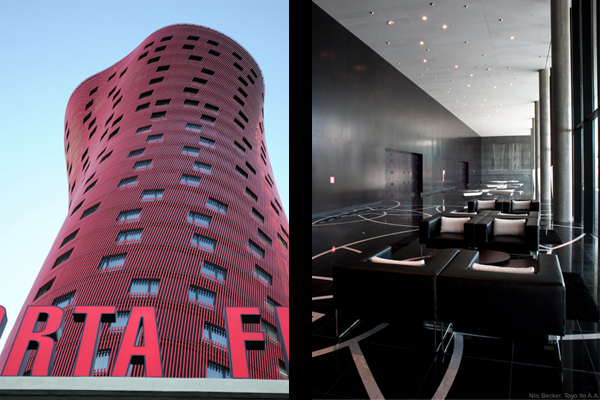
Torres Porta Fira, Barcelona (2004)
The idea of “modernity” was of course originally about the liberation of rational and autonomous individuals from traditional communities, and the formation of a civil society based on respect for the freedom of individuals. It also entailed the belief that nature could be conquered through technological innovation. I think it can be said that the twentieth century achieved this ideal of modernity and that the realization of such a civil society has created a better life for us today.
Today’s cities, however, look quite different from the cities of the future imagined by our predecessors a century ago. City dwellers are too often confined within monotonous grids, their connections to other people are severed, and they are condemned to an isolated existence. By now, those who migrated to the cities dreaming of a life of freedom and abundance have lost their spirited expressions and been reduced to a crowd of alienated individuals. Modernist architecture built a wall between itself and nature and relied on technology to create artificial environments with no connection to nature. It privileged function and efficiency, and cut itself off from the unique history and culture of its local settings. This kind of isolation from nature and rejection of the local community is to blame for the uniformity of today’s cities and the people who live in them.
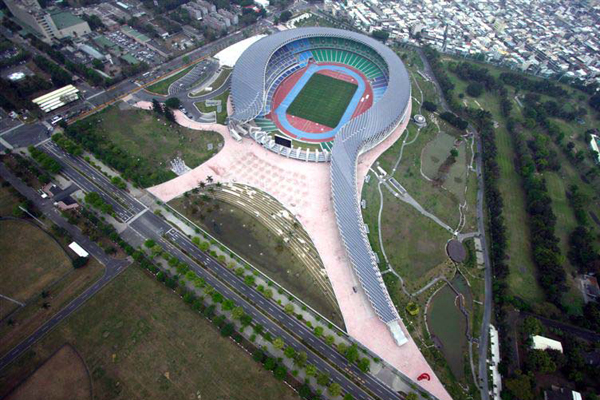
Main Stadium for The World Games (2009), Kaohsiung, Taiwan R.O.C. Photo: Fu Tsu Construction Co., Ltd
My work has always been about tearing down this wall that separates modern architecture from nature and the local community, in order to create architecture that is open to both. I was very happy to see that the jury members took note of this aspect of my work as well. They wrote,
“Seeking freedom from the rigidity of a grid, Ito is interested in relationships – between rooms, exterior and interior, and building and surroundings. Toyo Ito’s work has drawn on inspiration from the principles of nature, as evidenced by the unity achieved between organic-like structures, surface and skin.”
I make it a point to keep visiting the site of the earthquake and tsunami that hit Japan two years ago on March 11, and each time I go I am reminded of the powerlessness of technology in the face of nature’s fury. This was a catastrophe brought about by human pride vis à vis nature.
I believe that the time has come for us to take back our closeness to nature, to open our humdrum city grids to nature’s abundance, and to rebuild a more vibrant and human environment. I urge all of us architects to work together to send out a new message to the next century, one that is as bright and full of hope as the one transmitted by our predecessors a century ago. In order for this to happen, we architects must transform ourselves. Let us not fixate on minor differences, but rather work together to find a message for the next generation that we can all share.
In his inaugural address of 1961, John F. Kennedy said, “My fellow citizens of the world: ask not what America will do for you, but what together we can do for the freedom of man.” Even now, a half-century later, there are no words that inspire us quite like these. Now too, we are being asked: what can we ourselves do for the freedom of man?
Thank you very much.”
A searchable and comprehensive guide for specifying leading products and their suppliers
Keep up to date with the latest and greatest from our industry BFF's!

The Sub-Zero Wolf showrooms in Sydney and Melbourne provide a creative experience unlike any other. Now showcasing all-new product ranges, the showrooms present a unique perspective on the future of kitchens, homes and lifestyles.

Channelling the enchanting ambience of the Caffè Greco in Rome, Budapest’s historic Gerbeaud, and Grossi Florentino in Melbourne, Ross Didier’s new collection evokes the designer’s affinity for café experience, while delivering refined seating for contemporary hospitality interiors.

Savage Design’s approach to understanding the relationship between design concepts and user experience, particularly with metalwork, transcends traditional boundaries, blending timeless craftsmanship with digital innovation to create enduring elegance in objects, furnishings, and door furniture.

Sub-Zero and Wolf’s prestigious Kitchen Design Contest (KDC) has celebrated the very best in kitchen innovation and aesthetics for three decades now. Recognising premier kitchen design professionals from around the globe, the KDC facilitates innovation, style and functionality that pushes boundaries.
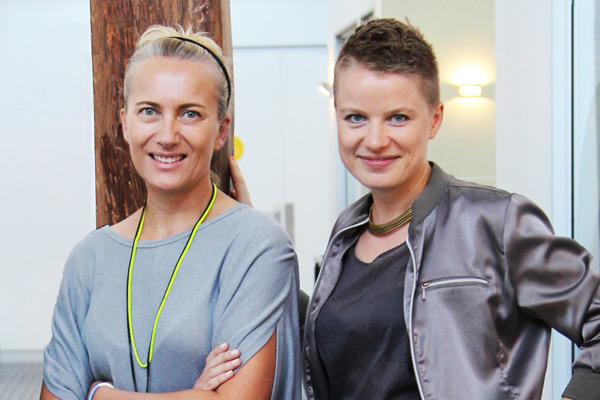
After the recent launch of their ‘Neighbourhood’ collection in collaboration with Designer Rugs, we speak with Skye Molyneux and Eva Krane from Bleux to find out what inspires and drives their unique designs.

Neolith and Granith, from Spain’s TheSize, bring a modern charm to bench surfaces – from quarry to kitchen.
Boral hosted a series of cocktail events for architects around the country this May to celebrate the launch of the 2010 Boral Design Award. The roadshow culminated in Melbourne, with a serious foodie fest in the city’s chic Coda Bar and Restaurant.
VSL Australia along with Emergency Architects, Indesign’s Darya Churilina and a record 80,000 athletes participated in the 14km city to surf race on Sunday 8 August. This year a record 80,000 entered the race, making the City2Surf the world’s largest run. Not only a way to support Emergency Architects projects, the race was presented a […]
The internet never sleeps! Here's the stuff you might have missed

Continuing our new series on the design enthusiasts who work in all sorts of different roles across the industry, we hear from Innerspace’s Creative Collaborator and State Manager NSW.

Milanese artisan Henry Timi celebrates natural materials through strikingly reduced geometric forms, creating a stripped-back vision of interior luxury.